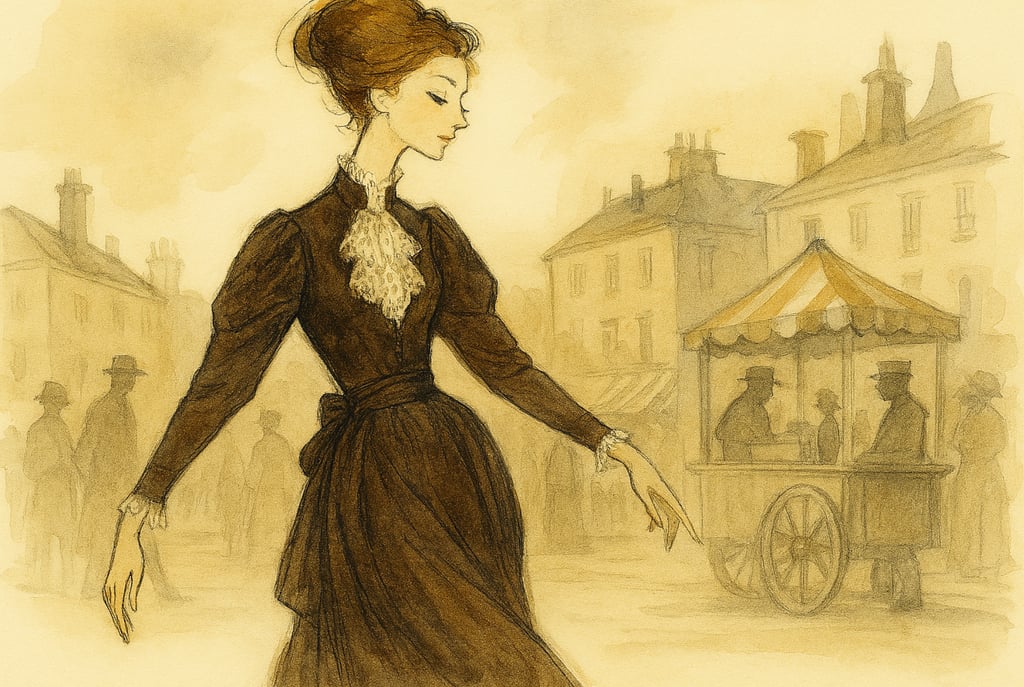London’s Victorian Ice Cream Wars: Turf Battles, Penny Licks, and the Birth of the Cone
In Victorian London, rival ice cream vendors fought turf wars over “penny lick” sales. Discover how these clashes birthed the ice cream cone and a British summer staple.
FOOD HISTORY & TRADITIONS


In the bustling, gaslit streets of Victorian London, ice cream wasn’t just a treat. It was a street-side sensation—cheap, novel, and wildly popular with the city’s working class. Sold for a penny in small, reusable glass cups known as “penny licks,” these frosty scoops became the dessert of choice for factory workers, children, and anyone seeking a moment of indulgence on a hot day.
But beneath the sweetness, London’s ice cream trade was anything but serene. The city’s frozen treat industry became the stage for fierce rivalries—between immigrant vendors, local traders, and competing recipes. These clashes, marked by turf disputes, sabotage, and public scandal, became so notorious they earned the nickname: the Victorian Ice Cream Wars.
Italian Immigrants and the Rise of Street Ice Cream
The popularity of ice cream in London during the 19th century was largely thanks to Italian immigrants, many from the region around Lucca in Tuscany. These “Hokey Pokey” men, as they were nicknamed (from a corruption of “Ecco un poco!” meaning “Here’s a little!”), brought gelato-making expertise and a willingness to work long, grueling hours on the streets.
They set up stalls in markets, near parks, and outside theatres, selling penny portions of ice cream in thick glass cups. Customers would lick the treat clean and hand the cup back, to be rinsed—or, more often, wiped quickly—before the next serving. While the product was a hit, the business was fiercely competitive.
Each pitch—a prime street corner, a busy market entrance—was worth fighting for, and fight they did. Vendors guarded their turf zealously, sometimes resorting to brawls, stick fights, or stone-throwing to keep rivals away. For many, ice cream wasn’t just a livelihood; it was survival.
Recipes, Rumours, and Rivalries
Beyond physical turf wars, the ice cream vendors battled over reputation. Recipes for the best gelato were closely guarded family secrets, with some sellers accused of diluting cream with chalk, flour, mashed turnips, or even worse substances to cut costs.
These rumours, whether true or exaggerated, damaged reputations and fueled public suspicion of the industry. London newspapers occasionally ran scandalous pieces warning readers of “adulterated ices,” portraying street ice cream as both unhygienic and possibly dangerous.
Hygiene was, in fact, a serious concern. The “penny lick” glasses were rarely washed properly between uses, allowing germs to spread among customers. Outbreaks of illnesses, including typhoid and tuberculosis, were often linked to contaminated glasses, leading to growing calls for reform by the late 1800s.
Cracking Down and Cleaning Up: The End of the Penny Lick
By the end of the Victorian era, authorities stepped in. Health and safety regulations tightened, and by the early 20th century, penny lick glasses were banned outright due to their role in spreading disease. This could have killed the street ice cream trade entirely—but instead, it sparked one of its greatest innovations.
Enter the ice cream cone. Invented as a hygienic, disposable alternative, the cone not only addressed health concerns but transformed how ice cream was eaten. No more shared cups—customers could now enjoy their treat on the move, with the added pleasure of eating the “container” once the ice cream was gone.
The cone’s arrival helped end the worst of the turf wars. With new serving methods and stricter oversight, the trade became less chaotic, paving the way for ice cream to evolve from a street-corner curiosity into a cornerstone of British summertime culture.
Fun Fact: From “Hokey Pokey” to Household Name
The Italian vendors’ chant of “Ecco un poco!”—“Here’s a little!”—not only earned them their nickname, but also became a part of London street culture, even inspiring rhymes and playground songs. The phrase’s echo can still be heard today in the popular children’s song “The Hokey Cokey,” though its origins trace back to those penny-a-lick days on Victorian streets.
The Lasting Legacy of the Ice Cream Wars
While the days of turf battles and penny licks are long gone, the Victorian Ice Cream Wars left a lasting mark. They introduced Britain to the idea of ice cream as an accessible, everyday treat, not just a luxury for the wealthy. They also paved the way for the innovations—like the cone—that turned ice cream into a global phenomenon.
More than that, these turf wars reflect the rough-and-tumble side of Victorian street life, where immigrant enterprise, working-class demand, and a dash of chaos combined to shape a food tradition we now take for granted.
The next time you enjoy a scoop in a cone, remember: it’s not just dessert. It’s the product of a century-old story of grit, rivalry, and the relentless quest to cool Londoners down.
